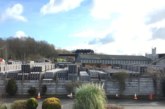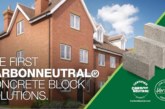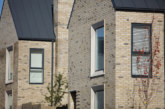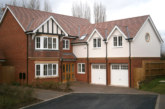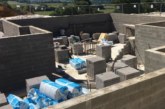Concrete can be used to create eye-catching exteriors on new homes. Gareth Davies, Technical Advisor at Tarmac Cement, highlights how.
An ever-popular material for construction, concrete is seeing a new wave of usage and innovation, thanks to its aesthetic values and its inherent qualities of strength, durability and affordability. In fact, a recent 2018 report by WGSN highlighted that concrete is trending across the latest trade shows and particularly with emerging designers.
Innovation in moulding and curing techniques have boosted its versatility, with many using the material in unexpected and unusual ways. From sophisticated board-marked and polished concrete, to furniture and feature walls – the material can make contributions to projects in ways glass and steel can’t. Moving on from being just an architectural industrial material, concrete is now entering our outdoor spaces, adding vital kerb appeal and inevitably raising the perceived value of the property.
Hard-wearing, and with the option of a rough-hewn texture or a refined look, concrete is becoming a cornerstone of outdoor design. In particular, Tarmac Blue Circle bagged cement and concrete is being used increasingly for a range of applications, such as statement outdoor countertops, modern board-formed concrete walls, curved open gutters, and luxury stone terrazzo floors.
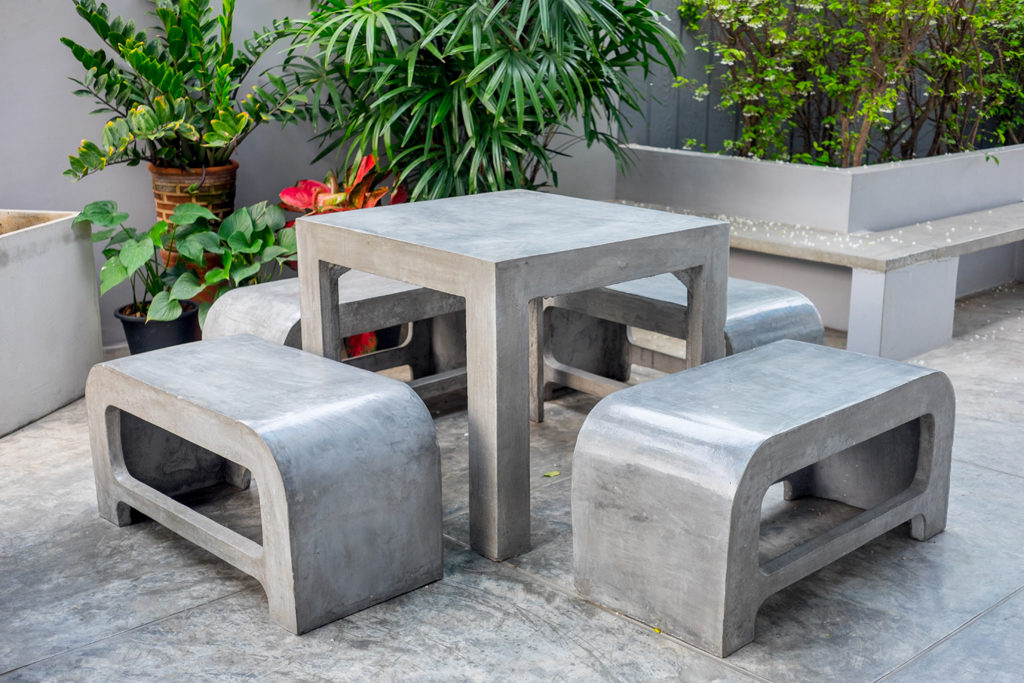
Patio ideas
Concrete offers permanence, durability and is also relatively inexpensive, but more than that, it’s a material that can set apart an exterior space from the mundane to an attractive and contemporary space.
Of all the materials available to build patios, concrete is the most traditional yet versatile choice. It can be smooth, clean, can be cast and formed into curved or complex geometric shapes – and, with the addition of colour, tints and finishes can become anything other than the classic light grey.
Of course, you can just pour a simple slab, but if you want to create a patio which boasts a variety of shapes, sizes, colours and textures, without creating a set of moulds or concrete stamps it might be a good idea to use paving slabs.
Big or small, an area of paving – stone, concrete, brick, geometric or even modern irregular layouts – can look great and provide an excellent centrepiece for an outdoor area. For this reason, it’s important to use the most appropriate products and materials to construct a strong, sound and level patio that can take the extra foot traffic and provide resistance to weather, year-round.
For many housebuilders a pre-packed ready to use product, such as Tarmac Blue Circle Slablayer, is a suitable choice for bedding slabs, since it overcomes many problems relating to site mixing. These include correctly gauging the mix; the use of excess water and the addition of other inappropriate materials that can result in reduced strength, increased permeability, and reduced durability of the hardened mortar bed.
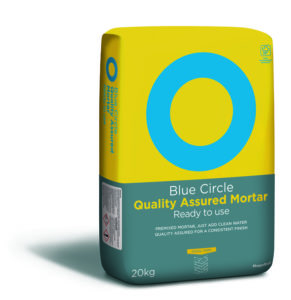 With improved quality and consistency, high quality products, such as Tarmac Blue Circle Slablayer, contain specially selected sand and cement for use under patio paving slabs. It also comes in 20kg weather proof, tear resistant packaging to reduce wastage on site.
With improved quality and consistency, high quality products, such as Tarmac Blue Circle Slablayer, contain specially selected sand and cement for use under patio paving slabs. It also comes in 20kg weather proof, tear resistant packaging to reduce wastage on site.
Of course, no patio is complete without pointing in between the paving slabs. Often, these joints can be the first casualty of ground movement and external pressure, so it’s crucial to use a weather resistant and durable mortar if you don’t wish to gauge and mix your own mortar products, such as Tarmac Blue Circle Quality Assured Mortar (left).
It also comes in 20kg weather proof bags, and importantly for smaller projects, the product is also available in conveniently sized 5kg and 10kg re-sealable tubs.
Board marked concrete
Board formed concrete is a method of construction that is being used more frequently because the material is extremely well-suited as a finished material in modern design. By imprinting the wood grain on the surface, it visually softens and warms concrete’s cooler appearance while still allowing concrete to express the construction technique.
Importantly for design, concrete takes on the shape and texture of the forms into which it is poured, making it possible to enrich its surface character by using textured forms. Often, timber is used in combination with concrete walls to add to the overall composition. For example, if the concrete has been formed with horizontal, rough-board forms, the surface is imprinted with wood grain texture and the two materials work well to create a stylish looking wall for any outdoor area.
Not only this, but using poured high strength concrete, such as Tarmac Blue Circle High Strength Concrete (40N) which can be used in sections as thin as 30mm whilst its high strength formulation make it ideal for exterior walls, can give your customers one of the most enduring, fire-resistant, thermally retentive and maintenance-free solutions. A concrete wall can last without decay for many years, protecting both the reputation and standards of your work.
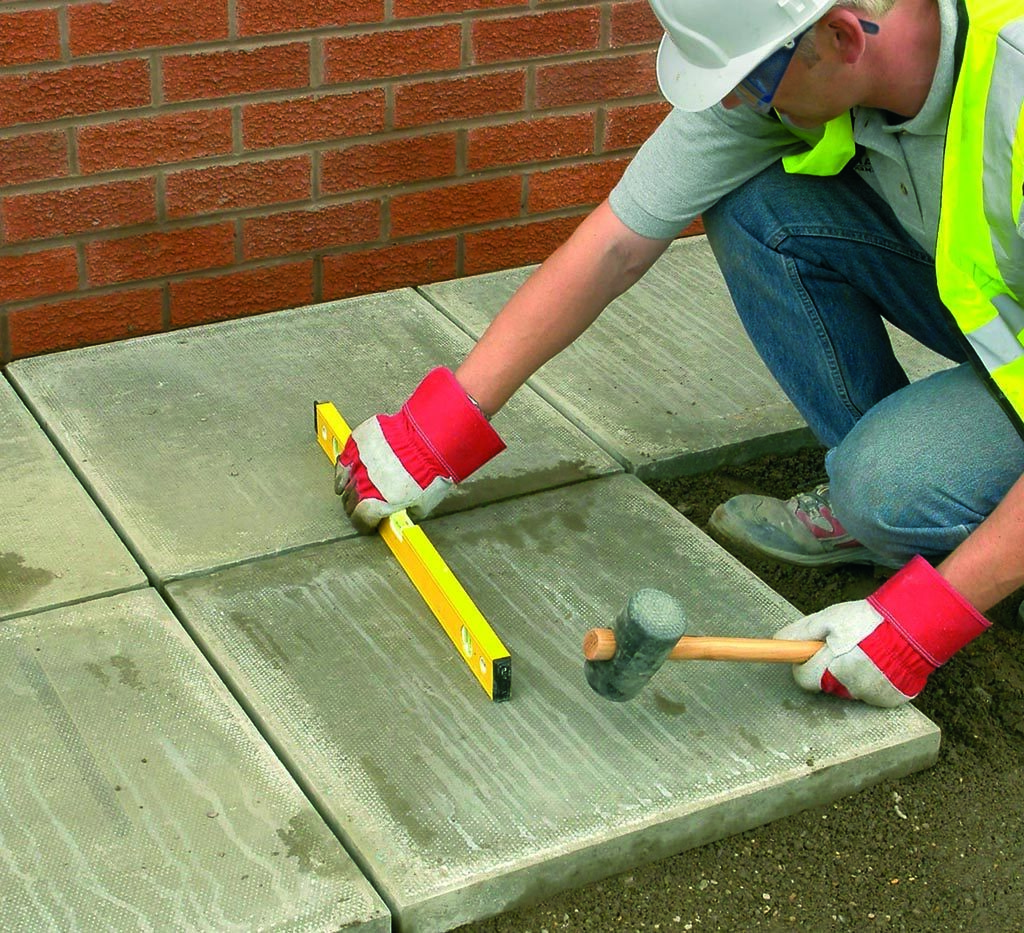
Outdoor furniture
As the trend for outdoor entertaining at home gains traction, housebuilders should begin to explore the different and exciting ways they can add value to their customer’s alfresco ambitions.
Installing concrete furniture such as a table or worktop is a sure-fire way to infuse a stylish and alternative aesthetic into a new build property’s garden. The worktop doesn’t need to appear cold or industrial, concrete can complement almost any style of outdoor area, the key is to suggest adding other warmer, natural textures like fabric or wood to keep it from feeling too austere.
Adding inserts or inlays is a great way to personalise a concrete workstation. Whether its small stones, pieces of glass or other materials that are mixed throughout the concrete, these can all contribute to a stylish and liveable outdoor landscape.
However, for furniture such as tables which are generally long, slender, thin beams, it’s critical to use a product with adequate workability and flexural strength such as Tarmac Blue Circle High Strength concrete (40N) to prevent cracking, chipping and shrinkage.
The creative possibilities of concrete are expanding, and housebuilders have the opportunity to use concrete in original and inventive ways. Yet, whether it’s a glamourous alfresco job or routine garden maintenance, using the right cement and concrete products can be crucial to maintaining a functional outdoor space.




